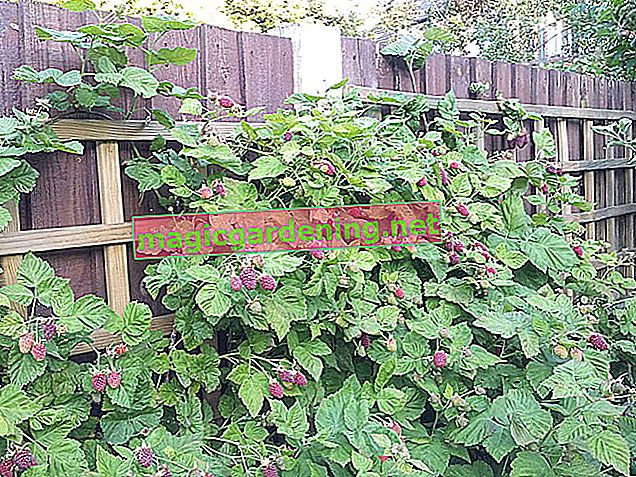
Summer raspberries bear on two-year-old rods
The most important thing to know about your summer raspberries is that they will only bear fruit on the biennial canes.
also read
- The rich variety of summer raspberries
- Here's how to cut back your raspberries properly
- Avoid crop failures by tying the raspberries
So you must not cut off the annual branches, the shoots of the current year, if you want to harvest raspberries in the following year as well.
This is what distinguishes the summer raspberry from the autumn raspberry, in which the fruits grow on the annual shoot.
How do you differentiate between annual and biennial rods
At first glance, it is not so easy to tell the age of the shoots. Size alone is not important.
Biennial rods differ from annual shoots by the darker brown color of the stems. You can recognize young rods by the light green shade of the stem.
You can be absolutely certain that it is a biennial rod if it has grown fruit.
Cut back the summer raspberries
- Cut back biennial shoots after harvest
- Then remove excess rods
- Shorten the rods a little in spring
- Cut out sick and weak shoots continuously
How to do it right!
Cut back the summer raspberry as soon as it is harvested. Once you've harvested a rod, grab the scissors and remove them.
Cut off the shoots just above the ground. This will prevent diseases.
Maintenance cut in the garden year
If the raspberries grow too abundantly, you should thin them out every now and then. The more airy the shoots, the less often they suffer from fungal attack.
You can shorten rods that are too long at any time. This makes the shoots stronger. You should only refrain from pruning directly during flowering.
Cut off sick rods immediately. They transmit diseases to other shoots and should therefore be removed from the garden immediately.
Tips & Tricks
With an optimal pruning, you don't leave too many rods standing. Then you get bigger fruits. Gardeners recommend leaving only the strongest rods on the bush at a distance of ten centimeters. It should never be more than 15.







